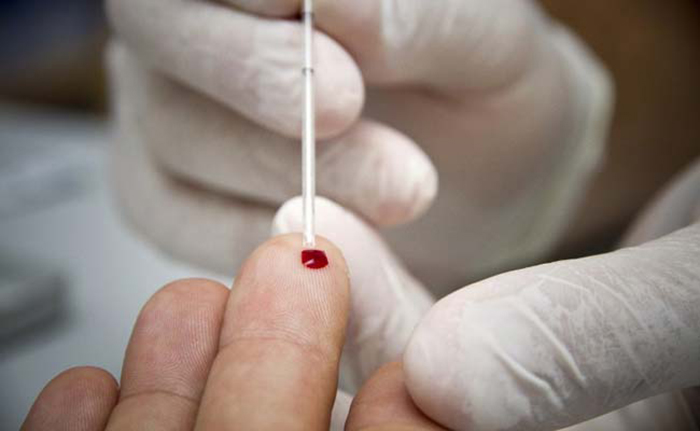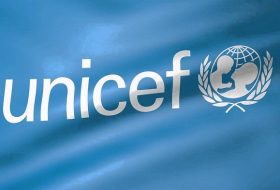The store owner stopped mid-sentence. This woman, he motioned, was one of the people Browning was looking for.
Nervously, Browning approached her and started talking to her about his ethnographic study of "real vampires." To be clear, these aren`t people who possess the supernatural powers that we associate with the likes of Count Dracula, but rather individuals who claim to have a medical condition that requires them to drink blood (human or animal) in order to sustain themselves.
Members of this community have chosen to identify themselves as "vampires" in defiance of the negative images that the label evokes. Did she know anyone who fit that description?
The woman smiled, and Browning had his answer - her open lips revealed teeth that had been filed to a point, like fangs.
"I call it my `first time,`" Browning told The Washington Post of the inaugural encounter. Though the woman never did give him a call as promised, Browning soon found himself in the company of vampires again at a night club. Then, several weeks following that, he met an "elder vampire" who invited him to attend meetings of the New Orleans Vampire Association (NOVA).
Browning, who has spent his entire academic life studying the depiction of vampires in film and literature, originally thought that there must be something deranged about real people who identify with the characters that seem more suited to horror movies than a historic district in Louisiana.
Pervasive vampire lore, from the ancient tale of Count Dracula to the modern romance of "Twilight," has assured that any mention of the mythical beings conjures images of blood-thirsty villains deeply rooted in the supernatural.
"Until 2009, the only area of vampire studies that I hadn`t approached was real vampires," said Browning, who is currently a postdoctoral fellow at the Georgia Institute of Technology. "I think I subconsciously saved it for last because I just thought what a lot of people think: that they must be crazy and have read too much fictional work about vampires."
His skepticism waned soon after he embarked on a class project that would turn into five years of field study among the real vampires of the French Quarter.
Surveys conducted by the Atlanta Vampire Alliance have found that there are at least five thousand people in the US who identify as real vampires. Browning said there are about 50 living in New Orleans alone - a figure that he guessed is common for most major cities and corroborated by sociologist DJ Williams to the BBC.
These communities have largely kept to themselves, knowing enough about public perception to not want to attract prying eyes. Browning, aware of the visceral disgust that his research is likely to provoke, seldom brings it up in everyday conversation. But his own initial belief that there was something wrong with these people faded after he started getting to know them.
"After a short period of time," he said, "I realized that they weren`t crazy. At least, they weren`t any crazier than your Average Joe."
According to Browning, symptoms of vampirism start to manifest around puberty, when those who later become reliant on ingesting blood find themselves physically "drained" for no discernible reason. They usually discover accidentally that blood offers a remedy: they might bite their lip, for instance, and realize that swallowing the metallic liquid between their teeth gives them an instant burst of energy.
Not every vampire must drink blood to survive (those who do are called "sanguinarians"). Some simply derive strength from taking the "psychic energy" of others. This can be accomplished through intimate human touch, like giving someone a massage.
The community has adopted terms to describe their unorthodox habits. To "feed" is to drink blood, while those who give their blood are called "donors." Being "awakened" and "coming out of the coffin" are ways to talk about becoming aware of one`s vampiric identity. "Elder vampires," then, are those who have been awakened for some time and can in turn advise others on how to cope.
One year into his study, Browning decided to try being a donor himself. During one of NOVA`s holiday charity events, where members of the vampire community come together to make food for the homeless, he met with one vampire who left the turkey he was cooking.
"Each of them have a particular method," Browning said. This person used a disposable scalpel to make a tiny prick on Browning`s back, then used his fingers to squeeze the area until blood came out. He put his mouth directly over the warm liquid and lapped it up, repeating the process two or three times before cleaning Browning`s wound.
Browning said only the pricking hurt, but mostly because he`s a "needle-phobe."
Someone might become a donor for a number of reasons, from being a close friend of the vampire`s to doing it for financial compensation and sometimes even sexual favors. Vampires approach these potential donors after having observed them for some time, and only if they`re fairly certain they`re the kind of people who won`t "freak out."
The vampires that Browning spoke with claim they can`t control their urges, which amount to a need for around two or three feedings a week. If ample blood is on offer, they might refrigerate it and later combine it with other ingredients, like tea.
Kinesia, a woman who identifies as a blood drinker, told the BBC that she isn`t a vampire by choice. "Many of us would rather not go through the cyclic symptoms and just be happy to live life like a normal person," she said.
A real vampire in the UK, Alexia, echoed the sentiment: "If the cause could be identified, I would most certainly take a pharmaceutical pill."
Most vampires have kept their condition from their doctors because they are wary of stigma. But those who are known to have disclosed their habits haven`t been given a medical explanation.
"This could very well be in our heads," a vampire who calls herself "CJ!" admitted to the BBC. Yet, those vampires who have tried to stop drinking blood have met scary consequences.
When Kinesia went four months without feeding, she found herself in the emergency room with a low heart rate that would shoot up to 160 when she stood up or walked around. This would be followed by a massive migraine, and sometimes a loss of consciousness.
Browning said he knows of a woman who found herself unable to go to work or even walk after a period of not ingesting blood. When her husband came to see her in the hospital, she fed from him in her room and immediately felt better.
Though the habits of modern vampires may seem frightening to most, Browning insisted that the ones he met in New Orleans were incredibly friendly.
"After a while, I felt more comfortable being at a NOVA meeting than I would be sitting in a coffee shop," he said. "That`s just how non-abnormal they came across. Being marginalized, they`re more in tune with their self-identity and much more aware of the world around them."
A gay man, Browning said he`s been able to sympathize with and believe that the vampires` condition is real even though there seems to be no scientific explanation.
"None of the people I interviewed gave me any reason not to believe what they`re saying," Browning said. "Being a gay man myself, it`s not like people can take my blood and see that I`m gay, but that doesn`t mean it`s not real."
He found the vampire community in the French Quarter to be predominantly Caucasian and to a lesser extent Latino. They ranged in age from 18 to 50, identified with a range of sexualities and religions and were split almost evenly between men and women.
Williams, a sociologist at Idaho State University, has conducted research on how vampire stigma has affected the quality of the individuals` healthcare. In his studies, Williams has found no evidence of psychiatric issues in self-identified vampires.
For Browning`s part, he believes that making people more informed about the real vampires in their midst will encourage important conversations about how normalcy is defined by the mainstream.
"I think what the [vampires] are doing is good, because it helps put into perspective what our conception of `normal` is," Browning said. "Them doing what they`re doing isn`t a problem. . . .It`s our preconceived notion of what normal is that`s the problem."
Over his five years of study, Browning found that most of the vampires were otherwise `normal` in the eyes of society. They had spouses, friends and jobs; many of them had children from whom they hid their practice. While some have taken to wearing Gothic attire and prosthetic fangs, others have no physical markers to indicate their vampirism.
When Browning started his research, he was most surprised to discover that most of the community members didn`t have an extensive knowledge of how vampires are portrayed in popular culture. Once, when he mentioned an episode of "True Blood," he said, "no one knew what I was talking about."
This lack of awareness indicated to him that the vampires weren`t super-fans who had simply taken their obsession with fantasy narratives to an extreme. Rather, they were normal people with routines no different from everyone else.
No different, that is, with the exception of one grisly drinking habit.
More about:
















































